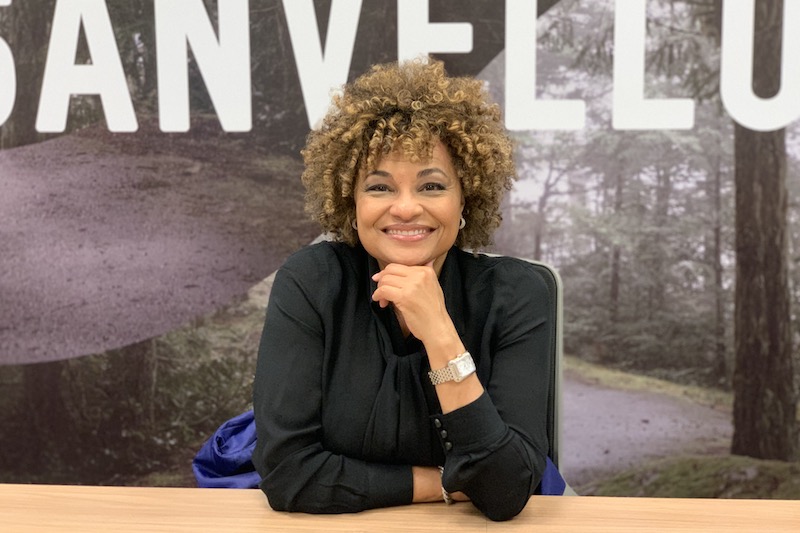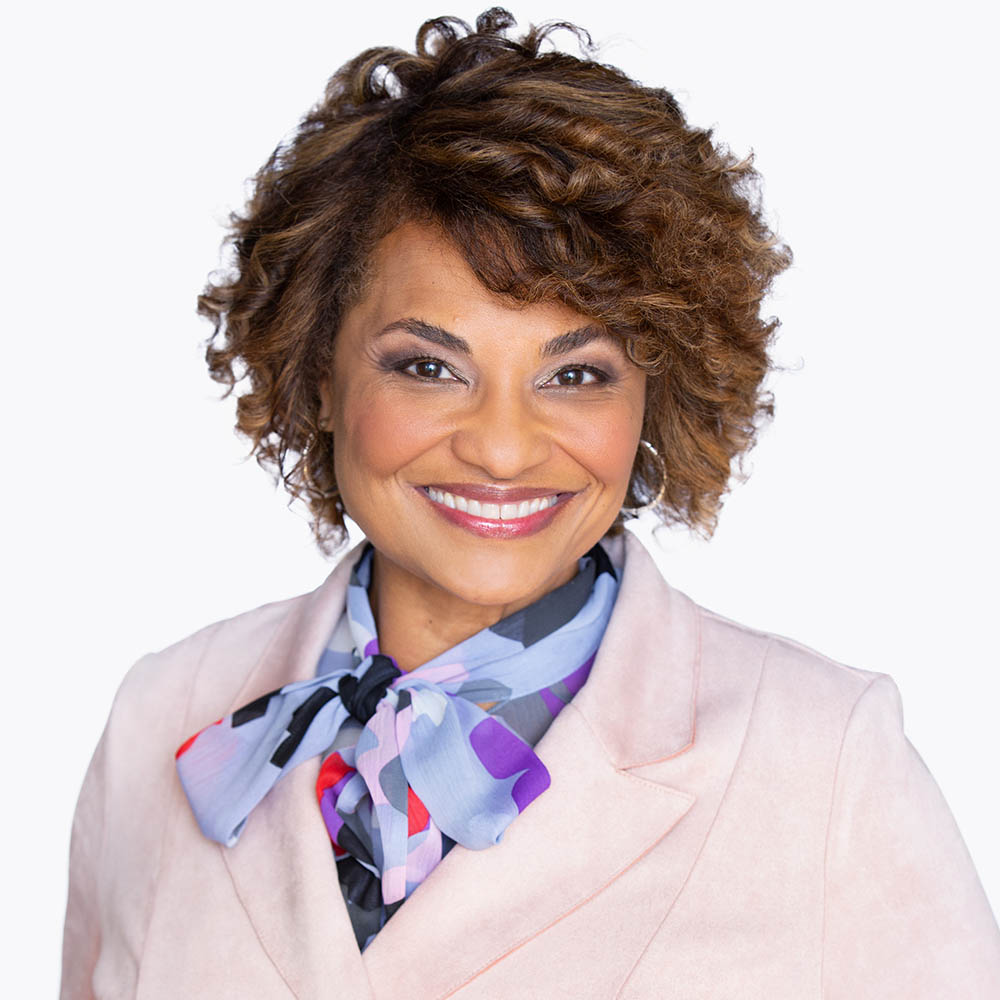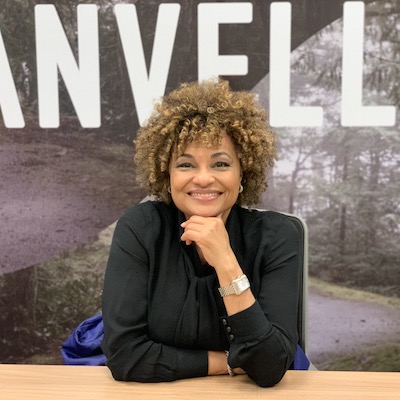
In my former career as a news anchor and reporter, I’d often run into people at the grocery store, school events, or out eating – people who recognized me from television. In an attempt to make small talk, or maybe because they really wanted to know, they’d strike up a conversation, asking me about the latest development on a current news story, or what the weather was going to be like on the weekend. Sometimes I knew the answer. Sometimes I didn’t, and I said so. I told the truth.
“I don’t know.”
“What do you mean you don’t know, you’re on the news!”
I got that a lot. Over time, I learned to turn those potentially awkward encounters into opportunities for enlightenment by saying:
“My job is not to know everything; my job is to find out.”
Today, in my new career, I still employ that same strategy.
As Vice President of Advocacy and Community for Sanvello Health, Inc., I focus on telling stories that make mental wellness approachable and relatable, especially for those who may not have considered reaching out for help due to stigma or accessibility. A big part of my job is advocating for marginalized communities. That’s why I’m also co-chair of Sanvello’s DEI committee, formed in the summer of 2020, after the murder of George Floyd. I live in Minneapolis, a few miles from where it all happened, and as a mother of a Black male, I was shaken beyond, as were many of our team members around the country. We quickly gathered on a Zoom call to support each other. There were tears. And long gaps of awkward silence. Some expressed hurt, anger, frightened bewilderment, and a need to do more.
Out of that call, we birthed BRIDGE, Sanvello’s diversity and inclusion committee, an acronym which stands for: Building relationships, inclusivity, diversity and greater equity. Our first order of business was researching and presenting company-wide diversity training that went beyond merely “checking a box.” We re-named the training “enrichment,” because that’s what it truly is, and we placed group dialogue at the core of each session. Additionally, we set up ERGs for employees to meet virtually in small groups. We worked with HR to make job postings more accessible, and we queried executive leadership about opportunities for growth within the company concerning equity and inclusion. Within a few months of launching BRIDGE, a company survey revealed 99% of Sanvello employees said they understood the importance of valuing diversity. A smaller percentage, 84%, said they felt we were making a genuine effort to include diverse employees on company initiatives. Not bad numbers, but we’re not looking for OK. We’re looking for best-in-class, and we clearly have more work ahead of us.
What’s telling is the majority of our team recognizes the need for DEI discussions. There was and there may still be low rumblings of skepticism—like, what is this?— yet, we heard over and over, particularly from team members of color, how much they appreciated the opportunity to talk about these issues as a company. Again, there’s always room for adjustment, but I think we accomplished near company-wide consensus through our willingness to have hard conversations and tell the truth about what we do and do not know.
Here are some of the steps we are continuing to take:
1. Authenticity
At the time we formed BRIDGE, Sanvello, a tele-mental health startup inside UnitedHealth Group Ventures, was less than 2 years old as a company. In addition to developing market strategies, onboarding therapists, and meeting the crushing demand for mental health services, we also faced, like so many other companies, the challenge of coming up with ways to intentionally address racial bias and inequities, by their very nature difficult and uncomfortable conversations, particularly for non-BIPOC individuals who have never consciously confronted racism, or had little to no experience surfacing discussions on social injustice. This is where transparency and vulnerability are crucial. By admitting we didn’t know what we didn’t know, that the work ahead of us would at times be uncomfortable, and that we were very much building the plane as we were flying it, we found common ground through assuming positive intent; we agreed to give each other the benefit of the doubt, loosening inhibitions to ask questions and risk making mistakes, with the hope that a difficult (albeit gracious) exploration would open the door for change.
“Vulnerability is a strength and even though it is difficult, when people display vulnerability or even irritation that’s a good thing because it shows you have created a space where people feel safe being vulnerable. Silence is when you need to be concerned.”
– Ted Meissner, BRIDGE committee member
2. Company-wide commitment
Right out of the gate Sanvello CEO Brian Sauer made it clear diversity initiatives are a priority here at Sanvello, words he backed up with action by serving as co-chair of BRIDGE and holding true to an open-door policy for feedback, questions, and concerns. This top-down approach is critical in creating buy-in and teeing up BRIDGE to succeed as a vehicle to facilitate diversity dialogue and education. Secondly, I strongly believe those of us who are burdened with the realities of racial injustice shouldn’t solely be burdened with the enormity of fixing them. Therefore, we selected BRIDGE committee members of multiple ethnicities, from all areas, titles and levels of expertise within Sanvello. I felt it imperative to hear from and consider multiple perspectives as we built our DEI strategy. Some of our members have extensive expertise in the DEI space. Some have none at all. At times our meetings are tense, we often disagree. Members initially expressed reluctance to share their opinions in front of executive leadership. Yet the work we did upfront to establish a baseline of positive intent helps move us through occasional rough patches towards solutions.
“If this is a family, you wouldn’t have the parents talk separately from the kids. If you’re having a family conversation it includes everybody.”
-Renee Holden, BRIDGE committee member
Something else we did, helped as well:
3. Safe spaces
As BRIDGE committee member Ted Meissner stated in one of our recent meetings; ‘safe spaces are not declared; they are co-created.’ For both company-wide enrichment sessions and small employee resource group meetings, we set up clear guardrails to honor those gatherings as safe spaces. We defined “safe” as a non-judgmental space to find community, learn, respectfully ask questions and make mistakes without fear of repercussion.
And then, something truly beautiful happened:
4. Trust
We noticed an uptick in informal conversations and information-sharing about diversity in our Teams channels. Enrichment discussions seem to flow a little easier and more individuals, including new employees volunteered to open up and share. All of this is indicative of a willingness to tread in difficult spaces, with the trust you’ll be supported along the way. For me as a leader, that’s everything. I’ve learned when it comes to building trust, consistency cannot be underestimated. Your team must see you talking the talk and walking the walk consistently. Leading those hard convos. Assuming positive intent. Risking vulnerability. Speaking authentic truth. Creating safe spaces. Being responsive to and respecting disagreements. Demonstrating flexibility and openness. Dedicating resources. Admitting what we don’t know and committing to finding out. All of this wins the day. It doesn’t guarantee that all our employees will see eye-to-eye on matters of diversity or other topics, but it does help build a bridge and give us reason to trust that Sanvello’s efforts to foster diversity, equity and inclusion are sincere.
The journey is a long one, and in many ways just beginning. I’m spending Black History Month looking back and moving forward; looking back for inspiration, at how far we’ve traversed on this path towards equity, and moving forward, transfixed on a vision of our tremendous and joyful potential to go so much further, together.
“At times, we see businesses create a wall between work life and real life. It’s impossible for the things that are impacting our people and the people we serve to not carry over to the work we do on a daily basis. Understanding this relationship, we need to go above and beyond to support our people, support those who count on us for support, create space to discuss, reflect and act upon the things that are impacting us. We do that by coming together as a community of people, first.”
– Brian Sauer, CEO, Sanvello Health, Inc., BRIDGE committee co-chair

By Roxane Battle Vice President Advocacy and Community at Sanvello
Roxane uses her gift of storytelling to make mental health care more relatable and accessible, especially among marginalized communities. You can see her as host of Sanvello’s in-app “Checking in with Roxane Battle” video series. Prior to coming to Sanvello, Roxane spent over 20 years as a news anchor and Emmy-nominated reporter at NBC Minneapolis, CBS, and FOX. Roxane was named an Architect of Change on mariashriver.com and has been featured in Working Mother and Ebony magazines. Her self-help memoir, Pockets of Joy: Deciding to Be Happy, Choosing to Be Free (Whitaker House 2017), became an Amazon best seller in multiple categories. Follow her on Instagram @roxanebattle.
